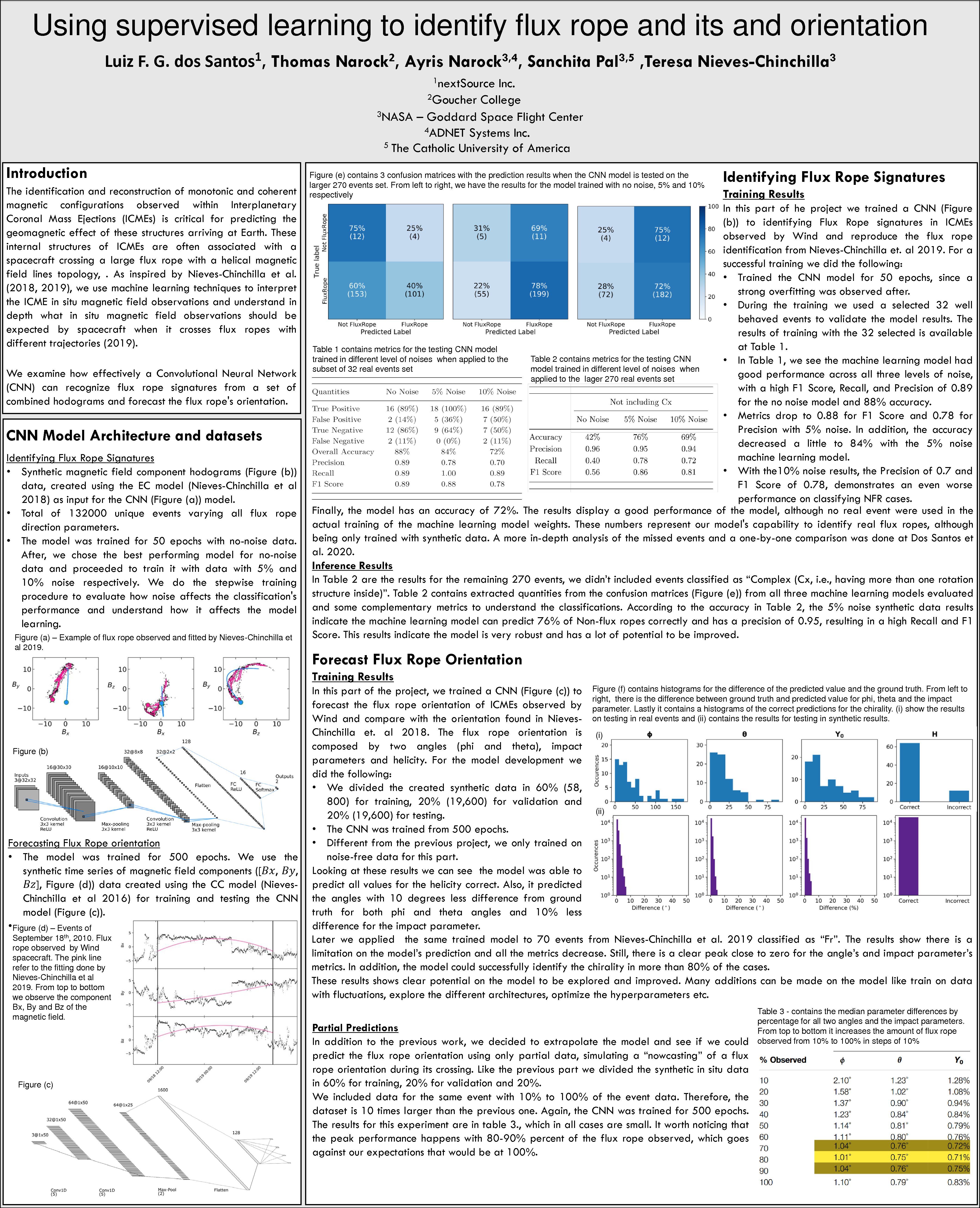Authors: Luiz F. G. dos Santos (nextSource Inc), Thomas Narock (Goucher College), Ayris Narock ( NASA GSFC/ADNET Systems Inc), Sanchita Pal (NASA GSFC/University of Helsinky), Teresa Nieves-Chinchilla(NASA GSFC)
The identification and reconstruction of monotonic and coherent magnetic configurations observed within Interplanetary Coronal Mass Ejections (ICMEs) is critical for predicting the geomagnetic effect of these structures arriving at Earth. These internal structures of ICMEs are often associated with a spacecraft crossing a large flux rope with a helical magnetic field lines topology, . As inspired by Nieves-Chinchilla et al. (2018, 2019), we use machine learning techniques to interpret the ICME in situ magnetic field observations and understand in depth what in situ magnetic field observations should be expected by spacecraft when it crosses flux ropes with different trajectories (2019). It is currently a time-consuming and manual process to determine the orientation and essential features of a flux rope (e.g., latitude, longitude, chirality, and spacecraft impact parameter).
We examine how effectively a Convolutional Neural Network (CNN) can recognize flux rope signatures from a set of combined hodograms and forecast the flux rope’s orientation. This project’s purpose is to train CNNs with magnetic field vectors produced from analytical flux rope data. Flux ropes are used to model various spacecraft trajectories and flux rope orientations. The CNNs are first trained with full-duration flux ropes, then with partial-duration flux ropes. The first offers a benchmark for how well CNNs can detect and predict flux rope orientation, while the second demonstrates how the fraction of flux rope examined influences accuracy in real-time forecasting. We examine how well a CNN can identify flux rope signatures from a set of combined hodograms and forecast the direction of the anticipated flux rope. A strategy for transforming physics problems into machine learning challenges is also addressed. The impact of experimenting with different neural network topologies on prediction accuracy is looked into. Finally, preliminary findings from a comparison of the trained network with WIND’s observed ICMEs from 1995 to 2015 are provided.


